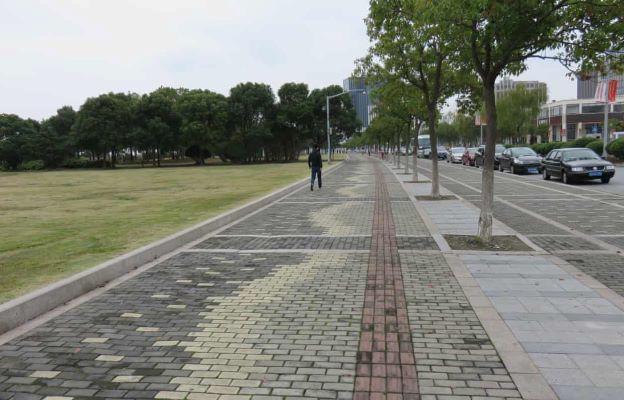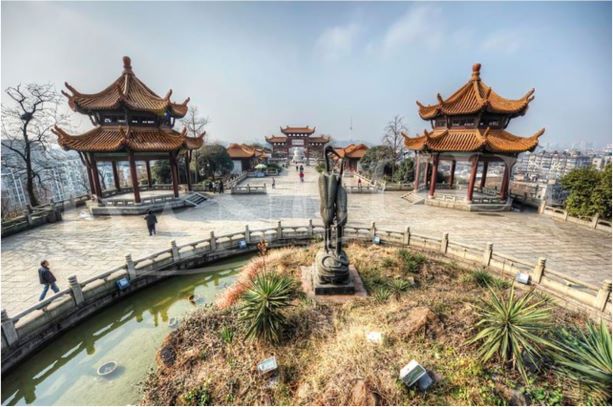

If it Looks Good, It can be India, not 'Foreign'.
Since disastrous large-scale flooding in Beijing in 2012, flood prevention has rocketed up the state agenda. The Sponge City initiative was launched in 2015 with 16 “model sponge cities”, before being extended to 30, including Shanghai.
In Shanghai’s Lingang district, wide streets are being built with permeable pavements so that rainwater can seep into the soil underneath them. The government is also looking to increase rooftop vegetation and water tanks on top of buildings to slow the flow of rainwater, prevent floods and collect more of the water for reuse.
About 630km away, the city of Wuhan is taking a slightly different approach to achieve the same goals. With decades of rapid urbanization having decimated the number of natural lakes that remain in the city, and a relatively high water table limiting the amount of water that can penetrate the ground, the government is focusing more on artificial ponds, grass swales and rain gardens to retain rainwater.
China’s experiences may be useful for other countries and cities, especially as it progresses on its international infrastructural project. Professor Guan Yuntao, director of the Research Centre for Environmental Engineering and Management, Graduate School at Shenzhen, Tsinghua University says, “As we built sponge cities in Shenzhen, Beijing, Shanghai, Wuhan and other places, we tailored our approach to the areas’ characteristics and overcame technical and management difficulties,” said Guan, who specialises in sponge cities and wastewater management. He further adds that these lessons can help countries to develop more environmentally friendly cities and avoid the pollution of their water bodies.
He explained: “A lot of highways and main thoroughfares may run through natural reserves or other ecologically important areas. If a major traffic accident such as an oil spill occurs and it rains, the rainwater will help the oil to enter the surrounding land and pollute it. This is why we may want to install treatment pools and rapid treatment systems along such roads. Rainwater on roads can result in serious pollution.”


Read: The Green School of Bali- A School with a difference
He added that more cities are beginning to strive for both economic advancement and environmental protection and restoration. “When you’re at the start of your economic journey, it may be tempting to ignore the potential environmental cost of development, but that would be a mistake. We need to ensure that the environment is protected or even improved even as we try to avoid economic stagnation,” he said.
By 2020, the Chinese government wants 20% of the built area of each pilot district to have sponge city functions, meaning at least 70% of stormwater runoff should be captured, reused, or absorbed by the ground. By 2030, a huge 80% of each city should meet this requirement. This target puts pressure on new areas to compensate for older districts, where a wholesale retrofit by 2030 seems doubtful. But the plan could very well be adopted in the new upcoming cities as well as repairing the old ones. A concrete replacement could ease the dipping levels of groundwater. We remain hopeful that eco-friendly ways do find their fans amongst rapidly growing economies including India. With commercialization rates soaring, we need practical ways to build sustainable cities that could be molded according to the location and its environment.
Image courtesy: Flickr
In a significant move toward advancing green energy and industrial growth in the state, Himachal…
Golabl chemical conglomerate BASF has announced that its now offering the world’s first biomass-balanced polyethersulfone…
In a crucial stint to bolster the biogas sector and sustainable dairying in the country,…
TotalEnergies SE has received approval to proceed with its Middlebrook solar and battery project in…
Andhra Pradesh Chief Minister Chandrababu Naidu has inaugurated the Rs 1,000-crore green hydrogen plant of…
The BITS Pilani has developed an innovative solution for managing landfill leachate, domestic septage, and…